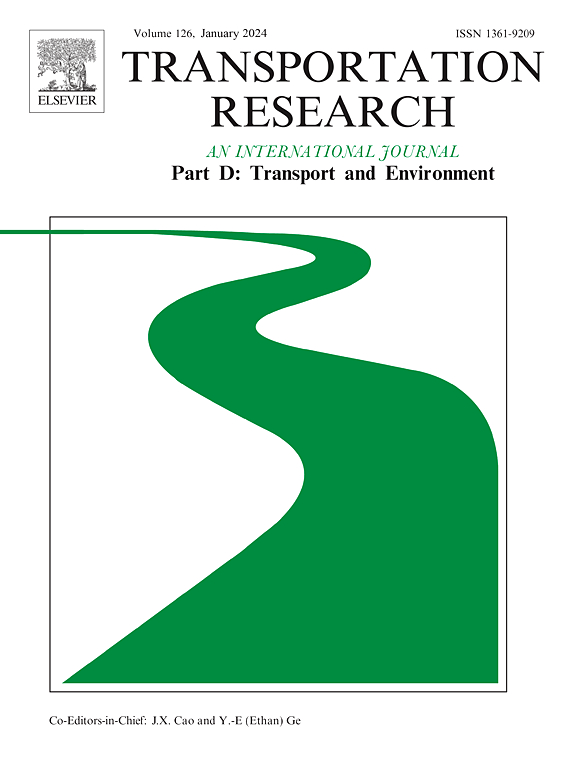揭示永久冻土区道路生态影响的遥感范例
IF 7.7
1区 工程技术
Q1 ENVIRONMENTAL STUDIES
Transportation Research Part D-transport and Environment
Pub Date : 2025-08-14
DOI:10.1016/j.trd.2025.104933
引用次数: 0
摘要
多年冻土区道路的生态影响仍然知之甚少,特别是在中小规模,限制了有效的保护和道路管理战略。我们提出了一种基于多尺度遥感的范式来量化道路建设和运营过程中的这些影响。利用空间偏差(D)、变化率(I)和道路生态影响指数(REII)对青藏高原第一条高速公路贡玉高速公路进行了评价。结果表明:地表水和植被影响延伸至100 m,且具有季节变化特征:雨季影响强度为4 ~ 6倍,建设影响是运营影响的1.1 ~ 1.4倍;月度影响幅度超过年度值,突出表明短期变化加剧。我们的范例能够快速、高精度地监测道路引起的生态系统压力,减少生态评估的时间滞后。考虑到冻土环境的敏感性,这种方法对于预测和减轻高速公路网络扩张的长期生态影响至关重要。本文章由计算机程序翻译,如有差异,请以英文原文为准。
A remote sensing-based paradigm for revealing road ecological impacts in permafrost regions
The ecological impacts of roads in permafrost regions remain poorly understood, particularly at small and medium scale, limiting effective conservation and road management strategies. We propose a multi-scale remote sensing-based paradigm to quantify these impacts throughout road construction and operation. Using spatial deviation (D), change rate (I), and Road Ecological Impact Index (REII), we assessed the Gongyu Expressway, the first expressway on the Tibetan Plateau. Results show that surface water and vegetation impacts extended up to 100 m, with seasonal variations: rainy season effects were 4–6 times stronger, and construction impacts exceeded operation impacts by 1.1–1.4 times. Monthly impact amplitudes surpassed annual values, highlighting intensified short-term variations. Our paradigm enables rapid, high-precision monitoring of road-induced ecosystem stresses, reducing time lags in ecological assessment. Given the sensitivity of permafrost environments, this approach is crucial for predicting and mitigating the long-term ecological effects of expanding expressway networks.
求助全文
通过发布文献求助,成功后即可免费获取论文全文。
去求助
来源期刊
CiteScore
14.40
自引率
9.20%
发文量
314
审稿时长
39 days
期刊介绍:
Transportation Research Part D: Transport and Environment focuses on original research exploring the environmental impacts of transportation, policy responses to these impacts, and their implications for transportation system design, planning, and management. The journal comprehensively covers the interaction between transportation and the environment, ranging from local effects on specific geographical areas to global implications such as natural resource depletion and atmospheric pollution.
We welcome research papers across all transportation modes, including maritime, air, and land transportation, assessing their environmental impacts broadly. Papers addressing both mobile aspects and transportation infrastructure are considered. The journal prioritizes empirical findings and policy responses of regulatory, planning, technical, or fiscal nature. Articles are policy-driven, accessible, and applicable to readers from diverse disciplines, emphasizing relevance and practicality. We encourage interdisciplinary submissions and welcome contributions from economically developing and advanced countries alike, reflecting our international orientation.

 求助内容:
求助内容: 应助结果提醒方式:
应助结果提醒方式:


